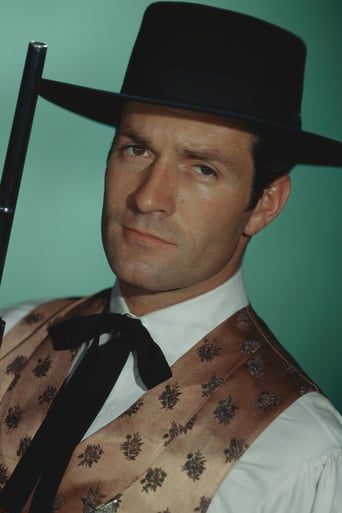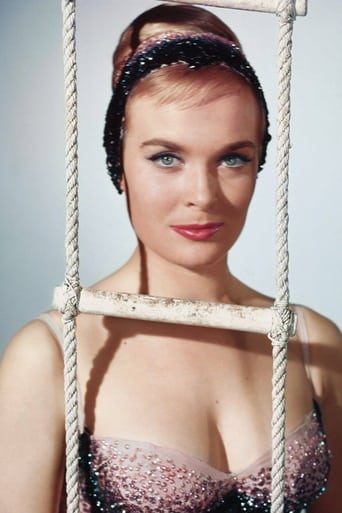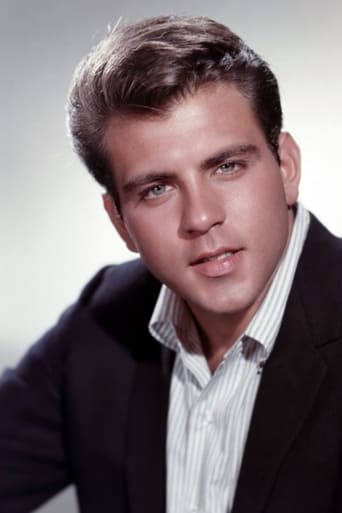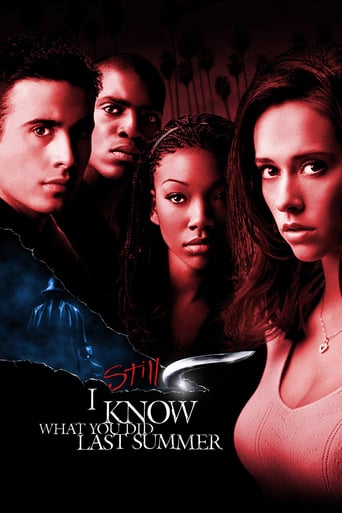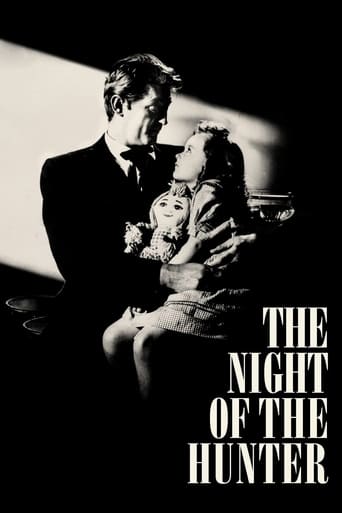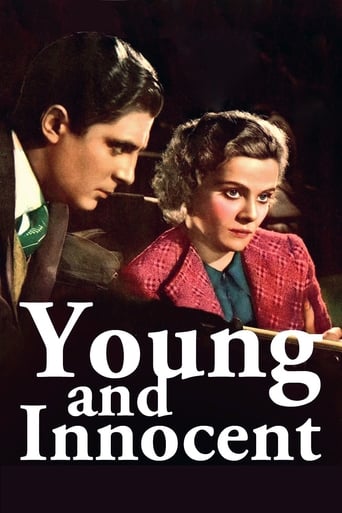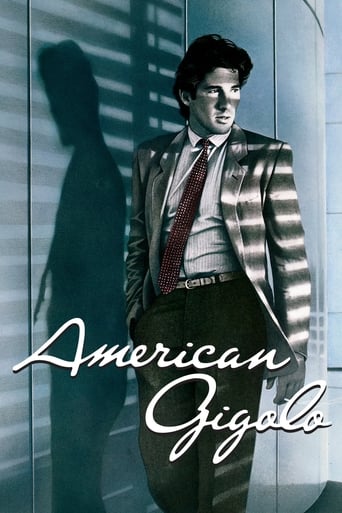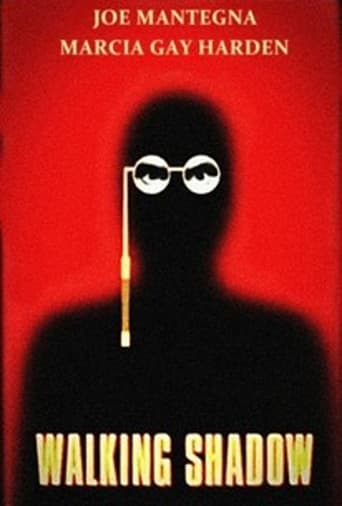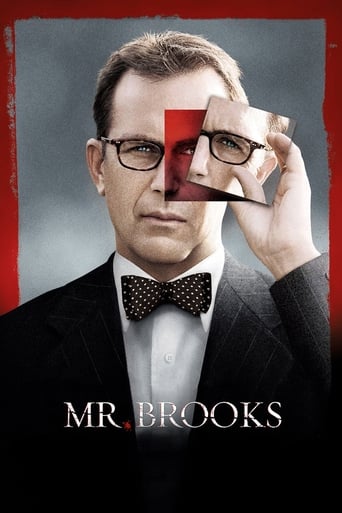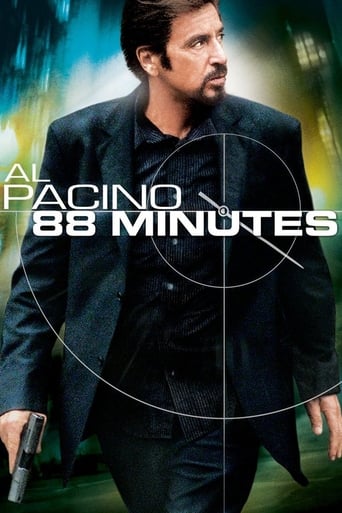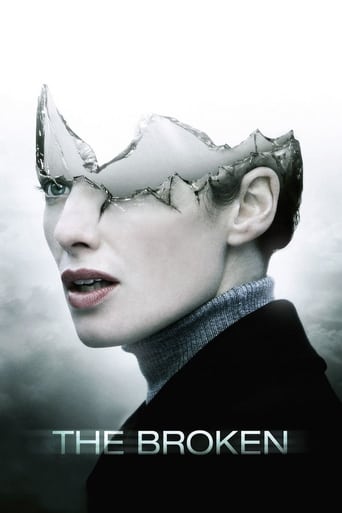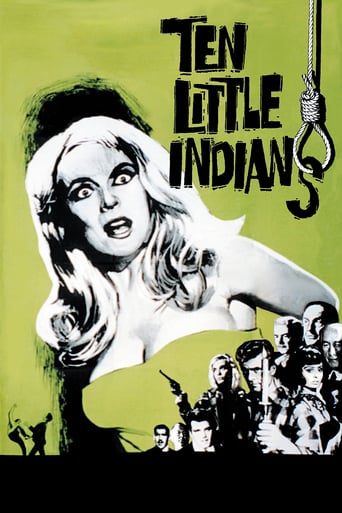

Ten Little Indians (1965)
Ten strangers are invited as weekend guests to a remote mountain mansion. When the host doesn't show up, the guests start dying, one by one, in uniquely macabre Agatha Christie-style. It is based on Christie's best-selling novel with 100 million sales to date, making it the world's best-selling mystery ever, and one of the most-printed books of all time.
Watch Trailer
Cast


Similar titles
Reviews
The 1965 film version of "Ten Little Indians" is incredibly entertaining. Despite not sticking to Agatha Christie's original novel, it is a product of its time: the characters, style, setting, script, and general feel of the whole movie is very 1960s. Like the 1945 film, it takes a more light-hearted approach to the story, which despite stretching the credibility of the story, makes for highly entertaining watching.The moving of the action from Indian Island to a beautiful mansion in the Swiss Alps is not such a silly idea as some people make it out to be; the Alps are incredibly attractive and appealing, and the characters actually fit into the setting. The casting is strong, and there is a good blend of youth and experience. Hugh O'Brian's Lombard is dashing but can appear aggressive, and he gives the impression of being a 'special guest star'. Shirley Eaton plays Ann Clyde with poise and level-headedness, but in this respect she is playing a very different character to the one Christie created! Fabian is very funny as Mike Raven, a spoilt, arrogant playboy. British screen veterans Leo Genn, Stanley Holloway, Dennis Price, and Wilfrid Hyde-White give the film a very British feel, however, Genn and Holloway seem a little restricted in their characters. Price is believable as an arrogant surgeon who believes himself to be cleverer than anyone else there. Hyde-White shines as Judge Cannon, with a retiring 'old and wise one' characteristic. Daliah Lavi overacts a bit as Ilona Bergen, the film's biggest step away from its source material, but she is very beautiful and well cast as a femme fatale movie star. As the servant couple, Mario Adorf and Marianne Hoppe are quite humorous in their stereotypical husband-and-wife arguments in the kitchen.To fit the attitude of the 60s, quite a few changes were made: the omission of sinister old woman Miss Emily Brent and the replacement of her with glamorous Ilona Bergen; and the alterations to some of the murders, including a cable car calamity, a rather spooky stabbing scene, and someone being pushed down the mountainside. The chemistry between the actors is fantastic - Dennis Price and Wilfrid Hyde-White work well together as the judge and the doctor, as do Leo Genn and Daliah Lavi, two characters who have an unexplained history together. However, the strongest pairing is that of Hugh O'Brian and Shirley Eaton, who seem perfectly matched and it is simple to imagine them running off and getting married once the story finishes.Overall, this film is very different to Christie's original novel, but it is entertaining and intriguing as a film in its own right. It certainly betters the subsequent 1974 and 1989 films.
And Then There Were None is and has been since I was 12 one of my favourite books of all time. If there is a contender for Agatha Christie's- of whose books I'm a fan of- best book, And Then There Were None would definitely be more than worthy. When you love a book as imaginative, suspenseful, beautifully characterised and sometimes scary(Emily Brent's death for instance) as And Then There Were None, no matter how you try to judge a film on its own terms, you do hope that the book is done justice to.In terms of film adaptations though, it's been a very mixed bag. The 1945 film for me is by far the best, witty, suspenseful, splendidly cast(Barry Fitzgerald, Walter Huston and Judith Anderson being the standouts) and faithful to the book's spirit in general. The 1974 film is heavily flawed, namely that it does get turgid and illogical in places and Charles Aznavour is awful but it looks wonderful, has a good score, has the extra bonus of having Orson Welles as the voice of Mr Owen and has good performances from Richard Attenborough, Herbert Lom and Oliver Reed make it a film better than its reputation.Strictly speaking, it's the 1989 version that is really quite poor, with only the locations, the lions and the performances of Donald Pleasance, Sarah Maur Thorp and Herbert Lom working somewhat. I found myself very impressed generally by this version, it's second only to the 1945 film and easily the best of the remakes.The film is not perfect however. Although it is in this version where the perpetrator is the most malevolent, the ending- changed from the I think unfilmable ending of the book(someone also raised the point that Vera Claythorne's death is too much by chance in the book and I can definitely see where they're coming from)- seemed dramatically under-baked for me. The music score is too jazzy and I think lightweight, jarring with the film's tone and diluting the suspense and claustrophobia. The Ten Little Indians song is good however, though I prefer the ominously Roccoco style of the one in the 1945 adaptation.Daliah Lavi and especially Fabian give the only two performances that I'd consider bad, in Fabian's case embarrassingly bad. Lavi is a little better than Brenda Vaccarro in the 1989 film, but she like Vaccarro does very little with a character that wasn't as written as well as she could've been and the melodrama(and there is a lot considering the profession her role has) is so overcooked that it becomes painful to watch and listen to. Fabian makes an obnoxious character even more so(what the remakes have in common actually is how annoyingly the role is written and performed actually), so much so you want him dead fast.On the other side of things, this version has beautiful locations, not as claustrophobic-looking as the 1945 film but for me it didn't have the sense that it was going to present any kind of logic problems like the later versions did. The photography compliments it very well, and the same goes for George Pollock's quite studied but professional direction that does little to spoil the tension. The murders are both inventive and at times eerie, while the script is literate with a touch of drollness, the characters generally maintain interest and don't have back stories and such that feel too underdeveloped or distorted(something that the 1989 version did to truly bad effect) and the story had me gripped, and while the identity didn't come as a surprise to me as I know the story so well it is easy to see why others would feel that, when I read the book was exactly that of complete surprise.Lavi and Fabian aside, I thought the cast were very good. Taking top honours has to go to Wilfred Hyde-White, whose Judge- one of the book's most interesting characters to me and well-performed in all four versions- is incisive and quick-witted, quite possibly one of his best performances. Dennis Price's Armstrong, almost as good as Walter Huston, is an ideal match, smart, intelligent and playful(only the 1989 film has this role played badly), while Leo Genn in a commanding and touching performance is this close to topping Herbert Lom in the 1989 film(the only asset of that that is the best of anything to do with this story and its adaptations) as the General and Stanley Holloway who is very authoritative with touches of humour is the best of the actors playing Blore.Hugh O'Brian and Shirley Eaton have been much criticised for being wooden. I actually didn't have a problem with them and found them quite appealing. O'Brian is handsome and smooth and Eaton smolders on screen and at least shows a sense of her character's predicaments. We even have the luxury of having an unbilled Christopher Lee as the voice of Mr Owen. Like Orson Welles-largely responsible for why the scene in the 1974 version in question was done so well, possibly the best done of the versions- his distinctive voice is not what you call inhuman, but there is a dignified and menacing quality to it that is enough to evoke some chills at least. The butler character is also the most interesting in this version.Overall, while flawed I liked it very much and consider it the second best version of a literary masterpiece. 8/10 Bethany Cox
'Ten Little Indians' is not the original title of Agatha Christie's famous book, of course. Even in 1965, no-one was brave enough to make a film called 'Ten Little N###ers'. It was also not the first time it had been filmed; Rene Clair's 'And Then There Were None' ( 1945 ) is generally regarded as the definitive version. I do like this remake though, directed by George Pollock ( responsible for the Margaret Rutherford 'Miss Marple' movies ), which updates the story to the then-present, setting it in a house at the top of an Austrian mountain rather than the island described in the book. Eight people, of disparate backgrounds, arrive at the home of one U.N. Owen, whom they have never met. They are American adventurer Hugh Lombard ( Hugh O'Brian ), model Ann Clyde ( Shirley Eaton ), pop star Mike Raven ( Fabian ), film star Ilona Bergen ( Daliah Lavi ), Judge Cannon ( Wilfrid Hyde-White ), General Mandrake ( Leo Genn ), Dr.Armstrong ( Dennis Price ) and private detective William Henry Blore ( Stanley Holloway ). Rounding off the 'ten' are the domestic staff ( Mario Adorf and Marianne Hoppe ). In each of the guests' rooms is a model of ten Indians, and a framed nursery rhyme beginning with the words: 'Ten little Indians came down to dine, one choked his little self, and then there were nine.'. A taped message ( Christopher Lee's voice ) accuses everyone present of murder. Soon the bodies start piling up. With each death one of the ten Indians is broken. First to go is Raven. As they puzzle it out, Dr.Armstrong realises that 'U.N. Owen' stands for 'unknown'. The killer is one of the group, but which one? With the exception of Fabian ( clearly included for the benefit of the American youth market ), this solid adaptation has a very strong cast, in particular Price and Hyde-White. Genn makes a big impression too, especially in the scene where he confesses to losing his nerve whilst under fire, an action resulting in the deaths of five of the men under his command. The killings are more explicit than in the earlier version, and good old Shirley Eaton gets to take her clothes off a few times.Emulating the theatrical gimmicks of William Castle, the picture has a 'Whodunit ( sic ) Break'. Just before the climax, the film is paused as the audience is invited to guess the killer's identity. Of course those who read the book and saw the earlier film knew it beforehand.Shot in sharp black and white, and boasting a nice, jazzy Malcolm Lockyer soundtrack, this is good stuff alright. Producer Harry Alan Towers must have liked the film - he remade it again in 1974, starring Oliver Reed and Elke Sommer, but it was an absolute disaster.
Agatha Christie's novel "And Then There Were None" has been made into a film several times, most often under the name "Ten Little Indians." Based on the nursery rhyme, people meet their deaths in various ways according to the poem: choking, bee sting, etc. In the original Christie story, the setting is an island (in this version it's an isolated ski resort) to which a group of people are invited by a U.N. Owen. Their unseen host accuses each one of them of a crime; in each case, the crime was due to the unforeseen result of an action, making the wrong decision, that sort of thing. And one by one each guest is killed. Before that happens, the guests realize that U.N. Owen is one of them.Good story, but this film has some problems, not the least of which is the grooveadelic '60s music that makes it seem like a swinging Dean Martin comedy instead of a mystery. Another problem is Fabian, and after you see this film, you'll realize why he never could go the Frankie and Annette route. His character is wisely dispatched right away.The rest of the cast consists of some excellent British character actors: Wilfred Hyde-White, Dennis Price, and Stanley Holloway. Playing a film star is the beautiful, exotic Israeli actress Daliah Lavi, and her clothes are a high point of the film; the gorgeous Shirley Eaton is in the cast as Ann Clyde, a secretary who becomes the love interest of the very handsome lead, Hugh O'Brian (from my home town, I might add).Black and white, "Ten Little Indians" is atmospheric but moves somewhat slowly. In a way it's hard to judge, as I knew the story coming in. Newcomers to the plot should enjoy it.


